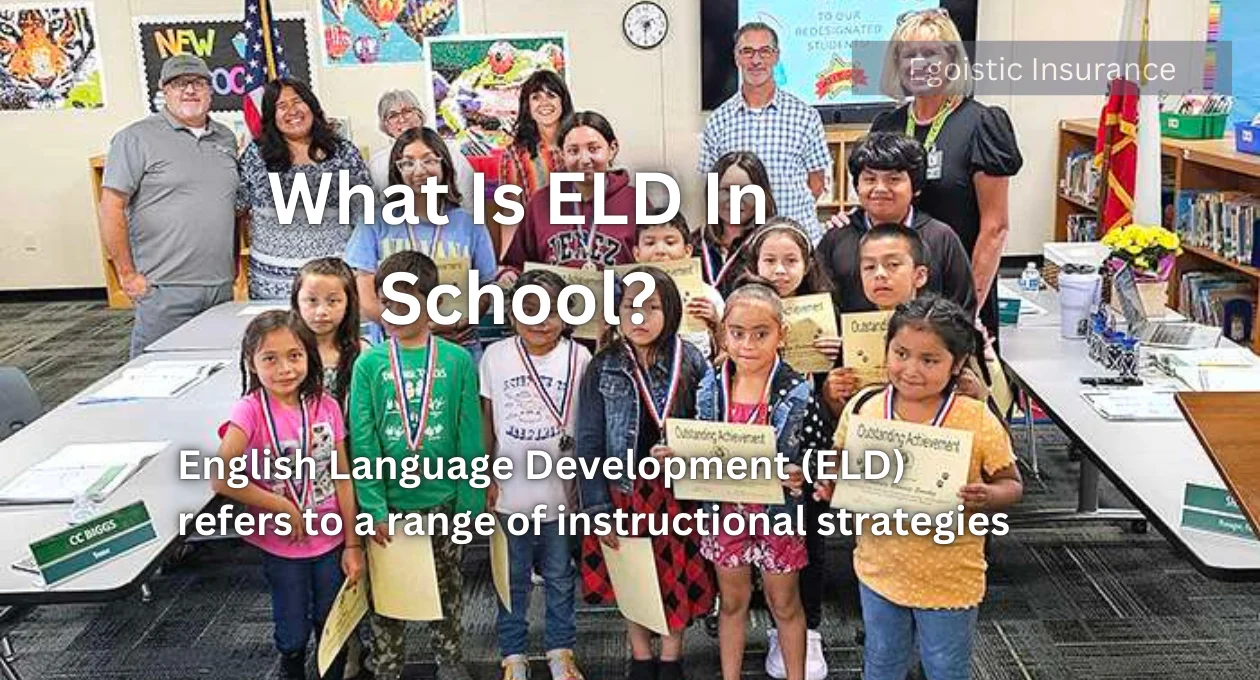In the diverse world of education, particularly in schools with multilingual classrooms, educators often encounter various terminologies and programs designed to support students. One such term that frequently comes up is “ELD,” which stands for English Language Development. But what exactly is ELD, and why is it crucial in educational settings?
English Language Development (ELD) focuses on enhancing students’ proficiency in English, enabling them to communicate effectively and succeed academically. This program is especially vital for English Language Learners (ELLs), as it provides tailored instruction that addresses their unique language needs. Through ELD, students engage with rich language experiences that promote vocabulary acquisition, grammar understanding, and practical communication skills.
Incorporating ELD strategies within the classroom can create a more inclusive environment, fostering a sense of belonging for multilingual learners. Teachers utilize various techniques, such as collaborative learning and visual aids, to reinforce language concepts while connecting students to the curriculum. As ELD practices continue to evolve, they play a fundamental role in empowering students from diverse linguistic backgrounds to thrive in their educational journey.
Understanding ELD

English Language Development (ELD) refers to a range of instructional strategies and programs specifically designed to support students who are learning English as an additional language. These students are often referred to as English Language Learners (ELLs) or English as a Second Language (ESL) students. ELD programs aim to improve their proficiency in English, enabling them to succeed academically and socially in an English-speaking environment.
Implementing effective ELD strategies in the classroom involves creating a supportive learning atmosphere that encourages risk-taking in language use. Teachers play a crucial role in this process by providing students with opportunities to practice speaking, listening, reading, and writing in meaningful contexts. By integrating hands-on activities and real-world applications, educators can help ELLs bridge the gap between their native language and English, ultimately boosting their confidence and engagement.
Moreover, assessment in ELD is essential for monitoring progress and guiding instruction. Formative assessments, such as observations and language assessments, allow teachers to identify specific areas where students may need additional support. This data-driven approach enables educators to customize their instruction, ensuring that each learner receives the necessary resources and strategies to thrive in an English-speaking academic environment.
Key Components of ELD

A crucial element of English Language Development (ELD) is the use of tailored instructional methods that cater to the varied language proficiency levels of students. By employing differentiated strategies, educators can address the specific needs of individual learners, ensuring that each student receives appropriate support. This personalized approach not only fosters language acquisition but also cultivates a greater sense of self-efficacy among English Language Learners.
Additionally, collaboration between educators, specialists, and families is vital for the success of ELD programs. Involving parents and guardians in their child’s education can enhance communication and reinforce learning at home. Schools can host workshops and information sessions to empower families with the tools they need to support their children’s language development effectively. This partnership creates a holistic support system that contributes significantly to the overall success of ELLs in school.
- Language Acquisition: ELD programs focus on helping students acquire the English language. This involves teaching vocabulary, grammar, pronunciation, and language structures in a way that is accessible and engaging. The goal is to make students comfortable with both conversational and academic English.
- Supportive Instruction: ELD involves tailored instruction that meets the specific needs of ELL students. This may include smaller class sizes, additional time for language practice, and instructional materials designed for various language proficiency levels.
- Integration with Core Curriculum: ELD isn’t just about learning English in isolation. Effective ELD programs integrate language development with the core academic curriculum. This means that students learn English while also engaging with subjects like math, science, and social studies.
- Cultural Sensitivity: Recognizing and valuing the cultural backgrounds of ELL students is an important part of ELD. Programs often include culturally relevant materials and activities that honor students’ heritage and experiences, which can also foster a more inclusive classroom environment.
ELD Instructional Strategies

Incorporating storytelling into English Language Development (ELD) can significantly enhance engagement and comprehension among English Language Learners (ELLs). By using narrative techniques, teachers can present language structures and vocabulary in context, helping students grasp new concepts more intuitively. Additionally, sharing stories from various cultures can shed light on the diverse backgrounds of students, fostering connections and inclusivity in the classroom. This method not only promotes language skills but also enriches students’ cultural understanding and empathy.
Another effective strategy is the use of technology to support language learning. Digital tools, such as language learning apps and interactive platforms, can provide personalized practice opportunities for students, catering to their unique pacing and interests. These platforms often incorporate gamification elements, making learning more enjoyable and motivating for ELLs. By integrating technology into ELD instruction, educators can create a dynamic learning environment that encourages exploration and creativity, further supporting language development and academic success.
ELD strategies vary based on the students’ proficiency levels and needs. Some common approaches include:
- Scaffolding: This technique provides temporary support to help students gradually build their language skills. For instance, teachers might use visual aids, simplified texts, or structured outlines to help students understand and produce English more effectively.
- Interactive Learning: Engaging students in interactive activities, such as group discussions, role-plays, and language games, helps them practice English in a dynamic and meaningful context.
- Differentiated Instruction: Tailoring instruction to meet diverse language proficiency levels ensures that all students receive appropriate challenges and support. For example, advanced ELLs might work on more complex texts, while beginners might focus on basic vocabulary and sentence structures.
The Importance of ELD

Effective English Language Development (ELD) programs also prioritize fostering a sense of community among English Language Learners. By creating a supportive classroom atmosphere, teachers can encourage students to take risks with their language use, knowing that mistakes are part of the learning process. Peer collaboration is essential, as it allows learners to engage in meaningful conversations and practice language skills in a low-pressure environment. Activities like group projects and partner work promote interaction, helping students build confidence in their communication abilities.
Additionally, professional development for educators plays a critical role in the success of ELD initiatives. Training sessions focused on the latest best practices and research in language acquisition equip teachers with the necessary tools to effectively support ELLs. Ongoing collaboration with language specialists can provide invaluable insights into individual students’ needs. This investment in educator growth ultimately enhances the quality of instruction and contributes to more effective language learning experiences for students.
ELD is essential for several reasons:
- Academic Success: Proficiency in English is crucial for academic achievement in schools where English is the primary language of instruction. ELD programs help bridge the language gap, enabling students to perform well across all subject areas.
- Social Integration: Language development plays a key role in helping ELL students connect with their peers, participate in school activities, and build friendships. This social integration is vital for their overall well-being and confidence.
- Equity and Access: ELD ensures that all students have equal access to educational opportunities, regardless of their language background. It helps address educational disparities and promotes fairness in the classroom.
Challenges and Considerations
While implementing English Language Development (ELD) programs is vital for the success of ELL students, educators often encounter several challenges. One significant hurdle is the varying levels of language proficiency among students in the same classroom. This diversity can make it difficult for teachers to tailor instruction effectively, ensuring that each student receives the right level of support and challenge. Additionally, limited resources and training in some districts may hinder the execution of robust ELD strategies.
Another challenge lies in maintaining student motivation and engagement over time. As ELL students grapple with the complexities of a new language, they may experience frustration or a lack of confidence, which can impact their overall learning journey. Teachers need to incorporate activities that are not only educational but also enjoyable, fostering a love for learning and encouraging students to embrace their language development goals. Building a strong, encouraging classroom community is essential to help students overcome these barriers as they progress in their language acquisition.
While ELD programs are beneficial, they also face challenges:
- Resource Limitations: Schools may struggle with limited resources, such as insufficient materials or a lack of specialized staff, which can impact the effectiveness of ELD programs.
- Diverse Needs: ELL students come from varied linguistic and cultural backgrounds, and their language needs can differ significantly. Effective ELD programs must be adaptable to address these diverse needs.
- Parental Involvement: Engaging parents and guardians in the ELD process can be challenging, especially if they do not speak English themselves. Schools need to find ways to communicate and collaborate with families to support their children’s language development.
Strategies for Overcoming Challenges
To effectively address the challenges associated with English Language Development (ELD) programs, educators can implement various strategies. One approach is to foster a collaborative environment where teachers share resources and best practices, allowing them to learn from one another and enhance their instructional methods. Additionally, differentiation in instruction becomes crucial; using varied materials and adjusting lesson plans to meet individual needs can help bridge the proficiency gap. Professional development opportunities, such as workshops or training sessions focusing on cultural competence and ELL strategies, can further equip teachers with the skills required to engage a diverse classroom. Encouraging parental involvement through multilingual communication and community workshops can also support ELL students, reinforcing the importance of language development at home and in their broader social context.
Creating an engaging curriculum that is responsive to the needs of English Language Learners is vital for their success. Incorporating interactive activities, such as role-plays and discussions, encourages students to practice their language skills in authentic contexts. Additionally, leveraging technology can enhance learning experiences, providing access to resources and platforms that facilitate language development. By blending traditional methods with innovative approaches, educators can create a dynamic learning environment that motivates ELL students.
Monitoring progress through regular assessments helps educators identify areas where students may need additional support. Implementing formative assessments allows for timely adjustments to instructional strategies, ensuring that each student’s needs are met. Feedback should be constructive and aimed at reinforcing language skills while building students’ confidence. By fostering a culture of continuous improvement, educators can empower ELLs to take ownership of their learning journey.
FAQs
-
What is English Language Development (ELD)?
English Language Development (ELD) refers to instructional practices designed to support English Language Learners (ELLs) in acquiring the language skills necessary for academic success and social integration.
-
Why is ELD important for ELL students?
ELD is crucial for ELL students as it helps bridge the language gap, promotes academic achievement, fosters social connections, and ensures equitable access to educational opportunities.
-
What are some common challenges faced by ELL students?
ELL students may face various challenges, including differing levels of language proficiency, limited resources in schools, and difficulty in maintaining motivation and engagement during the language learning process.
-
How can teachers support ELL students in the classroom?
Teachers can support ELL students by implementing differentiated instruction, fostering a collaborative classroom environment, engaging parents through multilingual communication, and creating interactive and responsive curricula.
-
What role does parental involvement play in ELD?
Parental involvement is vital as it reinforces language development at home. Schools should strive to communicate effectively with parents and offer workshops that encourage participation in their children’s learning journey.
-
How can technology be used to enhance ELD instruction?
Technology can enhance ELD instruction by providing access to diverse resources and interactive platforms that promote language development, facilitate communication, and allow for personalized learning experiences.
Conclusion
In summary, English Language Development (ELD) is a vital component of the educational system for schools with multilingual students. By focusing on improving English language skills, ELD programs help students achieve academic success, integrate socially, and access equal educational opportunities. While there are challenges, the benefits of ELD are substantial, making it an indispensable part of modern education.
In addition to the strategies mentioned, building a strong sense of community within the classroom can significantly enhance the ELD experience for students. By encouraging collaboration among peers, educators cultivate an environment where students feel safe to express themselves and develop their language skills. Implementing group projects and language buddy systems fosters friendships and promotes engagement, allowing students to learn from one another. This supportive atmosphere not only aids in language acquisition but also boosts overall confidence and belonging among English Language Learners.
For more interesting information keep visiting egoisticinsurance.online


